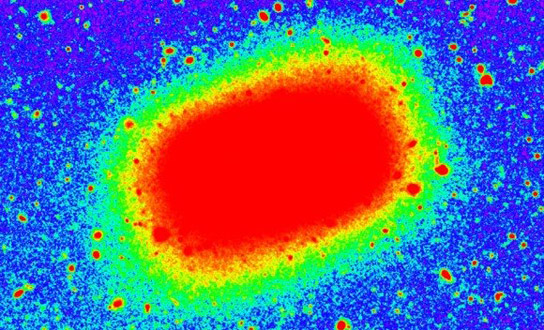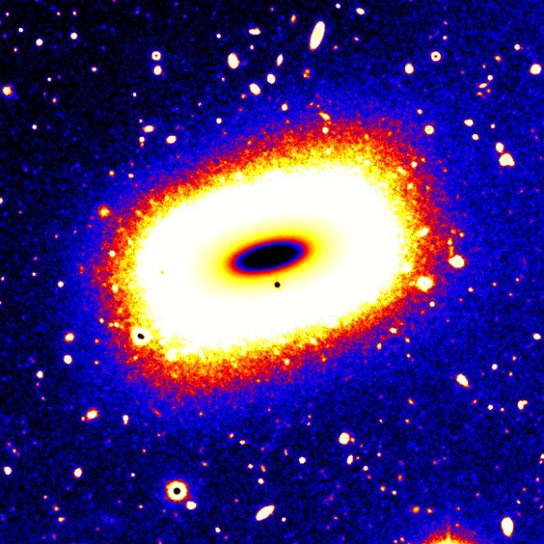
This rare rectangular-shaped galaxy was located 70 million light-years away, 21 Mpc, in the Eridanus Group, in the constellation Eridanus. LEDA 074886 has been dubbed the emerald-cut galaxy, and was recently discovered by an international team of astronomers at the Swinburne University of Technology in Australia. The findings will be published in The Astrophysical Journal but a preprint is available on arXiv [PDF].
Redshift values of the Eridanus Group show that it’s composed of about 250 galaxies, 70% of which are spiral and irregular type galaxies while the remaining 30% are elliptical and lenticular types.

LEDA 074886 was detected using wide-field images taken by astrophysicist Lee Spitler and the Japanese Subaru Telescope. The unusual shape of this dwarf galaxy is possibly the result of a collision between two former satellite galaxies of NGC 1407, the brightest of all 250 galaxies within its local group.
LEDA 074886 also features a stellar disk inside of it, which is aligned edgewise to Earth’s line of sight. The disk of stars rotates at speeds up to 33 km/second, though it hasn’t yet been possible to determine if it has a spiral structure because of the relative position of Earth.
The Milky Way is heading for a collision with the Andromeda galaxy in about three billion years, and it’s possible that the resulting structure will be rectangular as well.
Reference: “LEDA 074886: A Remarkable Rectangular-Looking Galaxy” by Alister W. Graham, Lee R. Spitler, Duncan A. Forbes, Thorsten Lisker, Ben Moore and Joachim Janz, 24 April 2012, The Astrophysical Journal.
DOI: 10.1088/0004-637X/750/2/121
Never miss a breakthrough: Join the SciTechDaily newsletter.